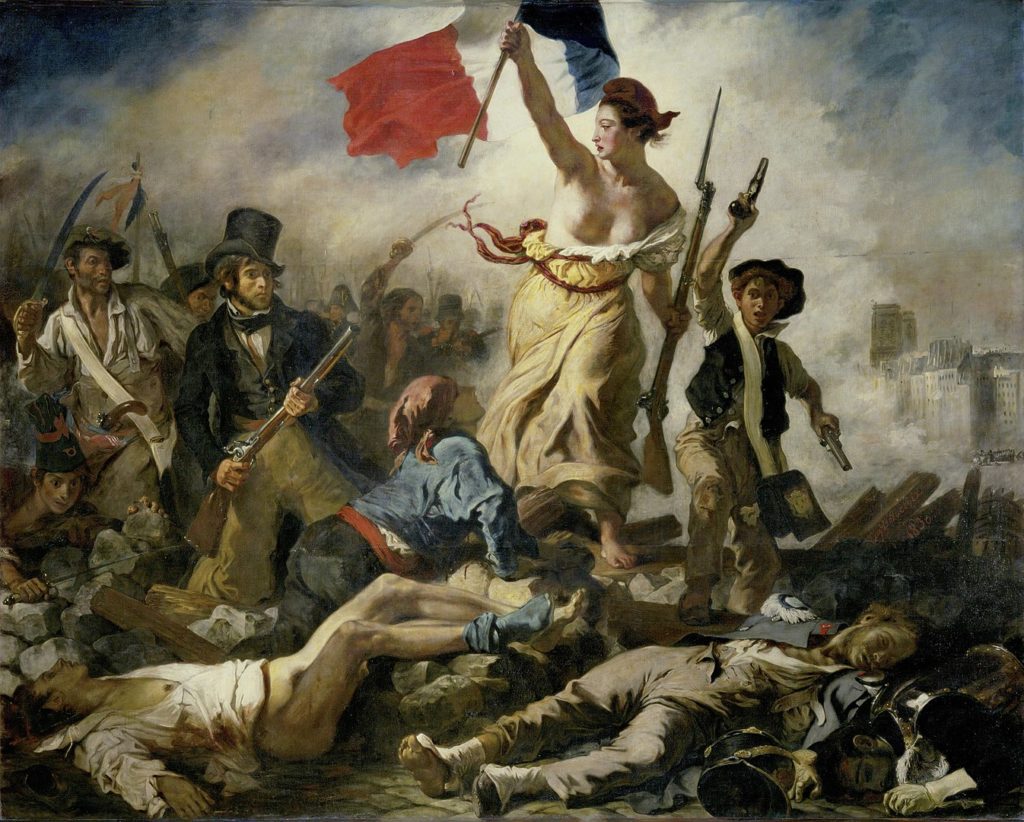Romantic musicians, like romantic poets, sought out the popular ballads and tales of the national past; they also sought to free their compositions from classical rules. Composers of opera and song turned to literature: Shakespeare’s plays, Scott’s novels, Byron’s poetry, and the poems and tales of Goethe and Pushkin.
Yet, although literature and music often took similar paths during the romantic era, there were significant differences. Romantic musicians did not revolt against the great eighteenth-century composers as Wordsworth and Coleridge revolted against their predecessors. Rather, romantic music evolved out of the older classical school.
The composer who played the commanding role in this evolution was Ludwig van Beethoven (1770— 1827), who lived most of his life in Vienna. Where earlier composers had indicated tempo with a simple “fast” or “slow,” Beethoven added such designations as appassionate and “Strife between Head and Heart.” Part of the color and passion of Beethoven’s works derived from his skill in exploiting the resources of the piano, an instrument that was perfected during his lifetime, and his use of more instruments—especially winds, percussion, and double basses—than was traditional. In his Ninth (and final) Symphony, Beethoven introduced a chorus in the last
movement to sing his setting of Schiller’s “Ode to Joy.”
After Beethoven, orchestral works took on increasingly heroic dimensions. The French composer Hector Berlioz (1803-1869) projected an orchestra of 465 pieces, including 120 violins, 37 double basses, and 30 each of pianos and harps. The Symphonie Fantastique, which he supposedly based on Goethe’s Werther, was completed in 1830.
Berlioz’s Requiem called for a full orchestra, a great pipe organ, four brass choirs, and a chorus of two hundred. The romantic propensity for bigness also affected the presentation of Bach’s choral works, like The Passion According to St. Matthew, originally composed for relatively few performers but revived with a full orchestra and a large chorus in a precedent-setting performance directed by Felix Mendelssohn (1809-1849) in 1829.
Music for the human voice reflected both the increased enthusiasm for instruments, particularly the piano, and the general romantic nostalgia for the past. In composing songs and arias, romantic musicians devoted as much skill to the accompaniment as to the voice part itself. Franz Schubert (1797-1828), Beethoven’s Viennese contemporary, made a fine art of blending voice and piano in more than six hundred sensitive lieder (songs), seventy of them musical settings of poems by Goethe.
Meantime, Carl Maria von Weber (1786-1826) was striving to create a fully German opera, taking an old legend as the libretto for Der FreischItz (The Freeshooter, 1821). Its plot ran the romantic gamut of an enchanted forest, a magic bullet, and an innocent maiden outwitting the Devil, and its choruses and marches employed folklike melodies. In Russia, Mikhail Glinka (1804-1857) cast aside the Italian influences that had dominated the secular music of his country, to base his opera Russian and Ludmilla (1842) on a poem by Pushkin, embellishing it with dances and choruses derived from Russian Asia.
Perhaps most romantic of all was the Polish composer Frederic Chopin (1810-1849). Writing almost exclusively for the piano, drawing heavily on the melodic forms of Polish popular music, Chopin best combined romantic music with national idioms, especially in his polonaises, which were written to accompany traditional Polish dances. His work was passionate and stirring, and he made the piano the most popular instrument of the century.

